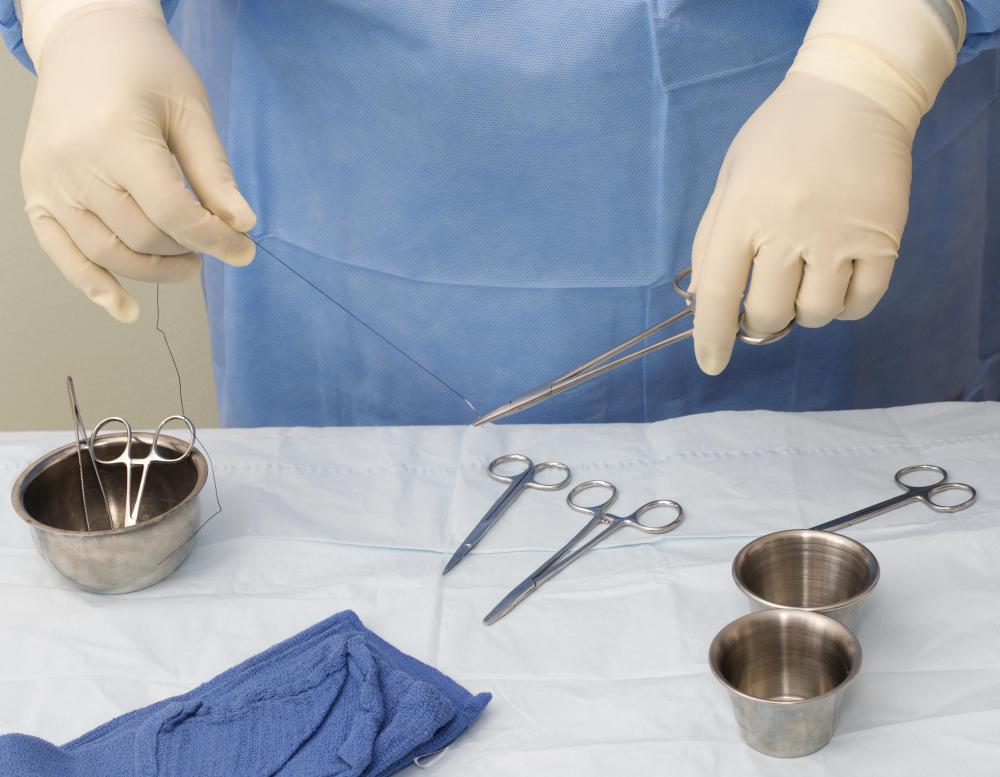At WiseGEEK, we're committed to delivering accurate, trustworthy information. Our expert-authored content is rigorously fact-checked and sourced from credible authorities. Discover how we uphold the highest standards in providing you with reliable knowledge.
What is Arthroscopy?
Arthroscopy is a surgical procedure used to diagnose and often treat disorders, diseases, or problems due to injury of a joint. Arthroscopy literally means visual examination of the joint. Most often, arthroscopy is a procedure performed in an outpatient setting by an orthopedic physician.
Arthroscopy has been common since the 1960s, but has steadily gained popularity with the development of better instruments and the advancement of techniques. Arthroscopy is most commonly performed on the knee, but also on the shoulder to repair a torn rotator cuff, and the wrist to relieve carpal tunnel compression. Arthroscopy can be performed on any joint as determined by a physician or surgeon.

Even though arthroscopy is typically an outpatient procedure, it still involves anesthesia. Whether it is general or local will depend on the specific arthroscopic procedure. The procedure itself involves small incisions, often about ¼ inch (.635 cm) in length and usually made on both sides of the affected joint, though larger incisions may be necessary for larger joints. A less invasive surgery than traditional "open" surgery, arthroscopy has a high rate of success. However, there are situations in which the arthroscopic procedure is not conducive to repairing a joint problem and open surgery is required.

The most frequent complications associated with arthroscopy, though reported to be rare, are adverse reactions to the anesthetic, blood clots, and damage to surrounding nerves and blood vessels. Infection of the incision is a more common complication, but can be prevented with proper post-procedural care. Depending on the arthroscopic procedure, sutures may be required, and a dressing will be applied to the incision either way. Generally, any sutures and dressings will be completely removed within a few days.

Because arthroscopy is a less invasive procedure than open surgery, recovery time is often expedited, along with physical therapy. Many professional athletes have undergone arthroscopy and returned to their sport in a reasonable, if not short, amount of time. Individual results will vary and are partially dependent on physical condition prior to the procedure, the extent of the disease or injury, and individual medical history. The advantages of an arthroscopic procedure are best determined on an individual basis by a specialist or treating physician.
AS FEATURED ON:
AS FEATURED ON:
















Discuss this Article
Post your comments